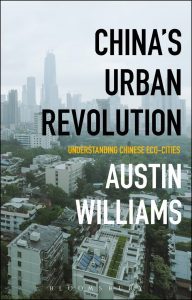Review: “The Power if Nuclear” by Marco Visscher
 “The Power if Nuclear: The Rise, Fall and Return of Our Mightiest Energy Source” by Marco Visscher
“The Power if Nuclear: The Rise, Fall and Return of Our Mightiest Energy Source” by Marco Visscher
Austin Williams
Remember when UK’s deputy prime minister, Nick Clegg stated that nuclear power was too expensive and too dangerous and anyway, it would take too long to come on stream. That was in 2010. If he had initiated a long-term nuclear infrastructure programme back then, Britain would be self-sufficient by now. However, in the light of the Fukushima power station disaster one year later, caution became everyone’s watchword.
For example, as a direct result of events in Japan that year, Germany’s Chancellor Angela Merkel resolved to phase out nuclear altogether, and after paying billions of euros to compensate the nuclear industry, the final three pressurised water reactors in Germany were closed down in 2023.
This important book by award-winning Dutch journalist, Marco Visscher is a kick-back against the kind of paranoid response. It challenges the way that the debate over time has undermined the most significant form of energy generation discovered since the Industrial Revolution’s use of fossil fuels. He shows how knee-jerk reactions from national governments are not new but have blighted the progress of the nuclear industry since its foundation. The intention of this book, which I think it does brilliantly well, is to challenge the common misconceptions, misinformation and alarmism that plague sensible debate about the subject.
Not too long ago, Visscher himself was a staunch, anti-nuclear critic and has been on a journey of discovery. Through extensive research and investigation, he has become an active proponent of the potential and relative safety of the technology.
His book sets out a series of historical vignettes that illustrate some of the more worrying episodes in the development of nuclear, and carefully demolishes much of the scaremongering surrounding the topic. From the atom bomb to Three Mile Island; from Chernobyl to climate change, Visscher reveals the hidden history of nuclear power and explains how a one-sided, anti-nuclear narrative has tended to dominate.
The exploratory nature of scientific enquiry and practical experimentation often treads a fine line between triumph and failure, but in the case of nuclear power there has been a unique focus on the potential for disaster. Protestors, the author points out, talk of “meltdowns” and have likened nuclear power to “extermination camps”. Refreshingly, Visscher carefully addresses the criticisms, forensically investigates the data and concludes that nuclear is a “great miracle” not a curse. In the course of the book, he reminds us of the immense economic, social and environmental benefits of nuclear power.
Of course, the well-trodden warnings of nuclear danger seem indisputable, and we worry if it could happen again. The power unleashed by splitting the atom was used to devastating effect in Hiroshima in 1945, for example. The Chernobyl explosion was symbolic of the fracture of the Soviet system as a threat to us all; the movie The China Syndrome warned of a global meltdown. The Cuban missile crisis is another example of a world brought to the brink of mutually-assured destruction by the folly inherent in nuclear game-playing. And now, we fear the proliferation of nuclear weaponry to Islamic states.
But Visscher tells a good story and provides counter-punches to each example. He reminds us, for example, that after the Second World War, the new nuclear industry was seen as “the spearhead for the unification of Europe” as many western countries spoke of ridding themselves of their reliance on fossil fuels, post-Suez. He points out that during the war against Japan, conventional weaponry – not nuclear bombs – had destroyed so much of the country that American military strategists were “looking for a city that was still standing so they could properly measure the damage.” It’s no excuse for the devastation visited on Hiroshima – destruction that Visscher describes in vivid detail – but it sets the story of Hiroshima in grim perspective.
He points out that unlike HBO’s dramatised TV series about the Chernobyl catastrophe, which graphically portrayed the spread of deadly radiation, the actual long-term death toll in the region currently stands at 46. This, he says, could be compared favourably to the 4,000 instantaneous deaths at the Union Carbide chemical plant in Bhopal, two years earlier. He notes that while US journalist Walter Cronkite pronounced that the reactor explosion at Three Mile Island, Pennsylvania had been “the worst nuclear power plant of the nuclear age”, there were actually no fatalities. As Visscher says, “fear sells”.
And very often it is the fear that causes the most harm. Frightening tales of global devastation have served a purpose; heightening a sense of the existential nuclear threat in order to maintain a permanent state of fear. It might function as a geopolitical deterrent, but it is not a healthy state of mind. But today, the nuclear threat has, to some extent been overtaken by the climate threat. The old, polarised debate about nuclear has morphed into a broad consensus about environmental Armageddon.
Visscher concludes the book, bemused that environmental catastrophists – those who should be pleased with a non-carbon mode of energy production – have shifted their attention from the mode of production, which they say that they broadly endorse, to that of consumption. Even if they have grown to accept nuclear power, they cannot countenance energy profligacy that comes with new sources of power. We should “temper our ambitions”, say the climate activists. This kind of belt-tightening rhetoric provides them with the opportunity to rail against technical fixes. At a time when the necessity of nuclear power seems to be more accepted than ever – even, begrudgingly by George Monbiot – Visscher says that the terms of the debate have been hijacked by these same people, who want to change our lifestyles and encourage us to minimise energy use rather than generate more of it.
In the last few days, Hinkley Point C, the first nuclear power station to be built in Britain in the last 30 years, has had its reactor installed and is on track to be operational by 2030. Meanwhile Sizewell C, which is yet to start on site, is scheduled to be up and running by 2035 and yet the decision on Sizewell will have to wait until the 2025 Spending review. It all seems like a positive turn. Ed Miliband, Secretary of State for Energy Security and Net Zero recently announced, “Whatever the challenges of nuclear, they pale in comparison to the energy security and climate threats we face.” Let’s see if nuclear energy provision can withstand these contradictory priorities. This book offers some important ammunition for the arguments ahead.
.






